BEYOND DREAM'S DOOR
Color, 1988, 80 mins. 35 secs.
Directed by Jay Woelfel
Starring Nick Baldasare, Rick Kesler, Susan Pinsky, Norm Singer
Vinegar Syndrome (Blu-ray) (US R0 HD), Cinema Epoch (DVD) (US R0 NTSC)
FATAL EXAM
Color, 1988, 114 mins.
Directed by Jack Snyder
Starring Mike Coleman, Terry Comer, Carol Fitzgerald Carlberg, Paul Steger, Gillio Gherardini, Maureen Lampert, Greg Rhodes
Vinegar Syndrome (Blu-ray) (US R0 HD) / WS (1.78:1) (16:9)
WINTERBEAST
Color, 1992, 76 mins. 46 secs.
Directed by Christopher Thies
Starring Tim R. Morgan, Mike Magri, Charles Majka, Bob Harlow, Dori May Kelly, David Majka
Vinegar Syndrome (Blu-ray) (US R0 HD), Winterbeast Entertainment Group (DVD) (US R0 NTSC)
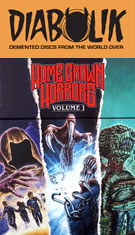
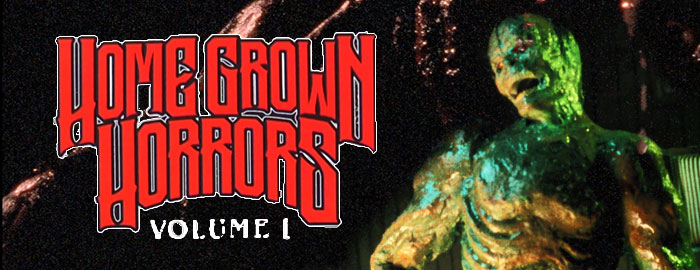
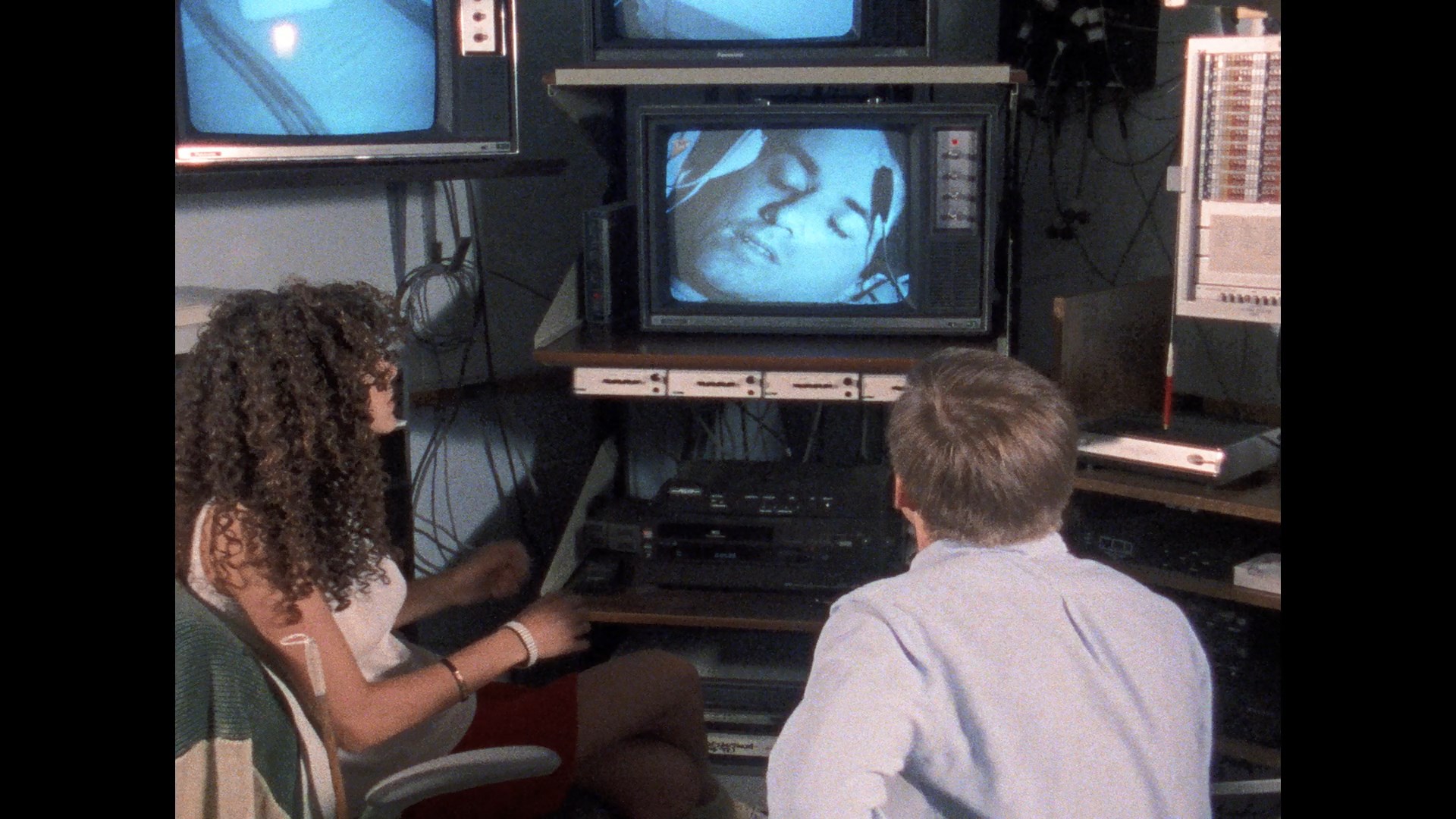 Genre magazines were also filled with coverage of tantalizing little productions scattered around the U.S., some of which never materialized or proved to be impossible to track down without a great deal of effort. That period
Genre magazines were also filled with coverage of tantalizing little productions scattered around the U.S., some of which never materialized or proved to be impossible to track down without a great deal of effort. That period 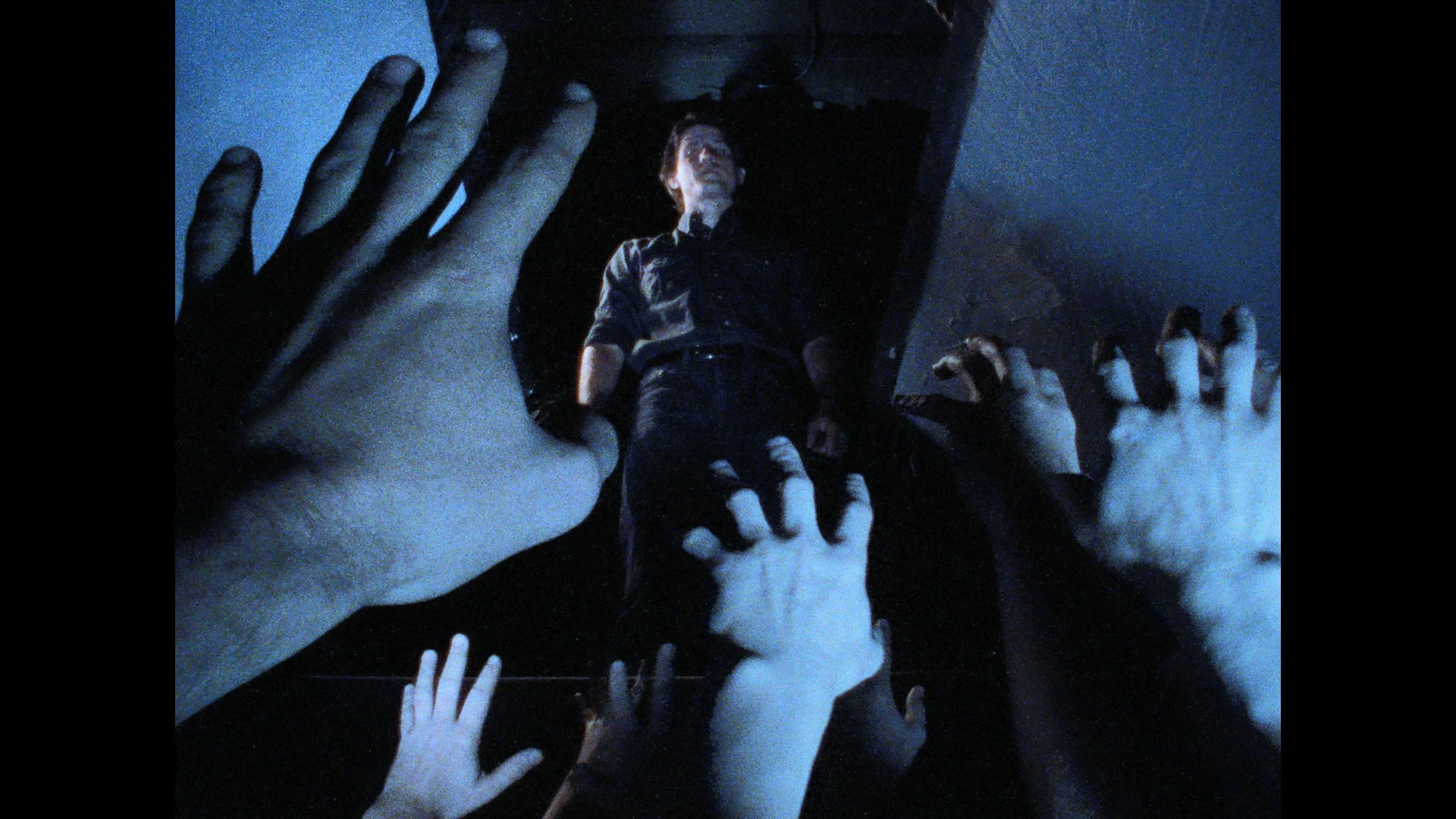 gets a chance to shine in Vinegar Syndrome's Home Grown Horrors Volume 1, a limited 7,000-unit three-disc Blu-ray set celebrating three shot-on-film horror titles that offer a peek at what was going on outside the more mainstream realm of Jason, Freddy, Pinhead, and Michael around that time.
gets a chance to shine in Vinegar Syndrome's Home Grown Horrors Volume 1, a limited 7,000-unit three-disc Blu-ray set celebrating three shot-on-film horror titles that offer a peek at what was going on outside the more mainstream realm of Jason, Freddy, Pinhead, and Michael around that time. 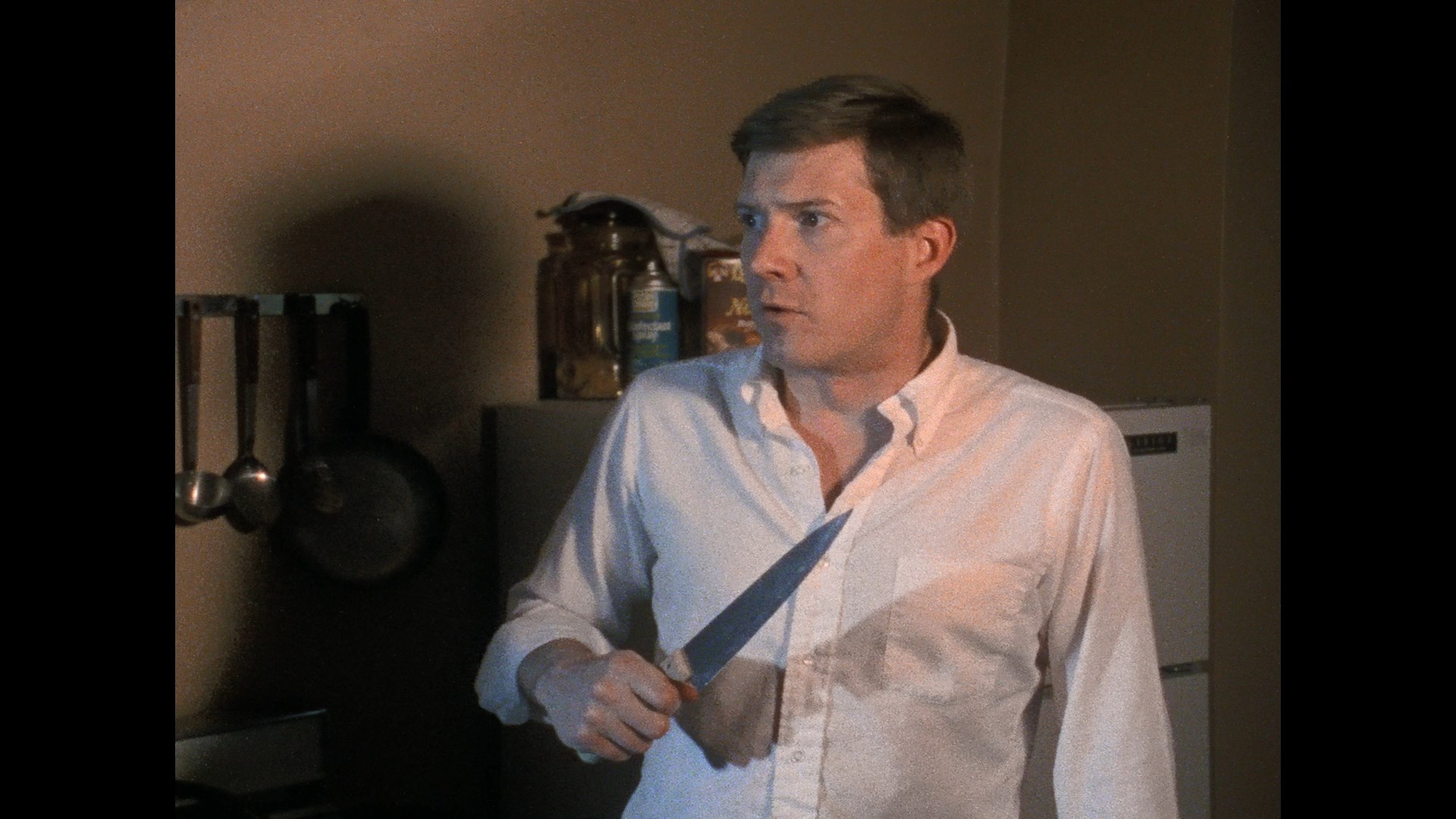 restrained sound design (here as a DTS-HD MA English 5.1 track with optional English SDH subtitles)
restrained sound design (here as a DTS-HD MA English 5.1 track with optional English SDH subtitles) 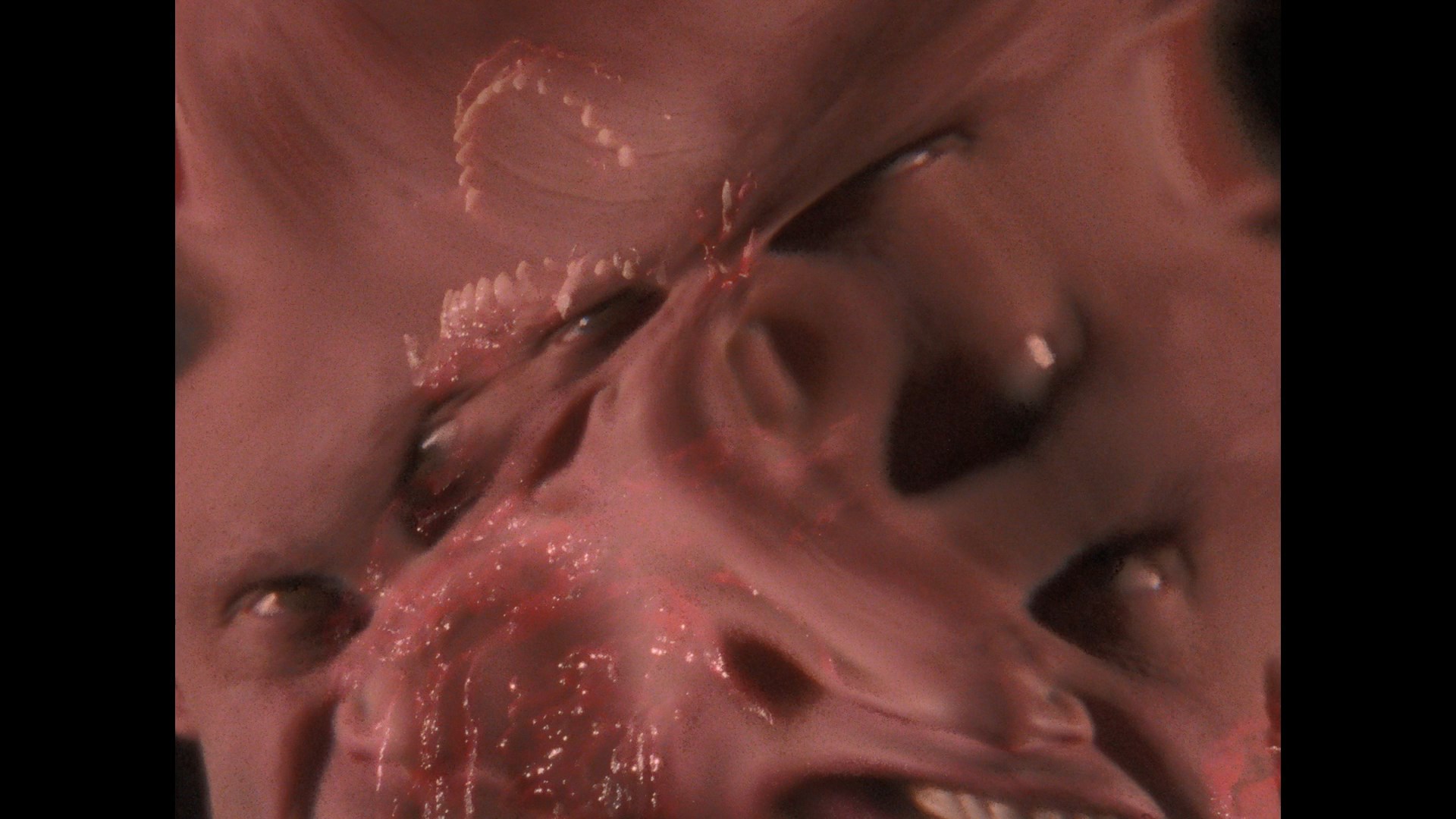 and jettisoning the unrelated 6-minute short film, Come To Me Softly, that was wedged into the original VHS release as an extra dream sequence.
and jettisoning the unrelated 6-minute short film, Come To Me Softly, that was wedged into the original VHS release as an extra dream sequence.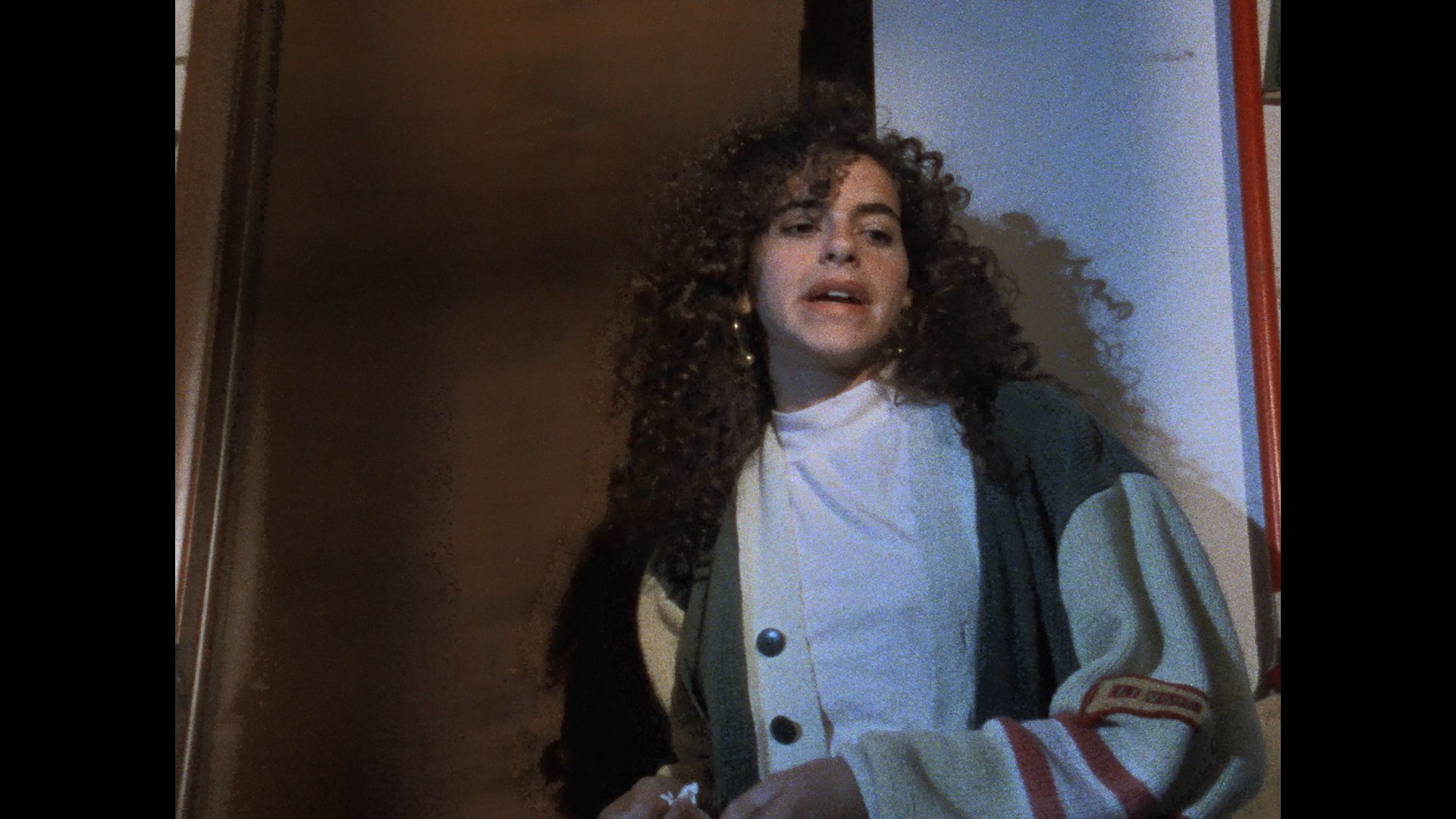 the foursome from the group track reunite again for a new track together and Baldasare also doing a separate one with superfan Dave Parker. Between the tracks you'll hear plenty about the decision to go ahead and make a feature film from what was supposed to be a thesis project, the literary figures who influenced the story, the
the foursome from the group track reunite again for a new track together and Baldasare also doing a separate one with superfan Dave Parker. Between the tracks you'll hear plenty about the decision to go ahead and make a feature film from what was supposed to be a thesis project, the literary figures who influenced the story, the 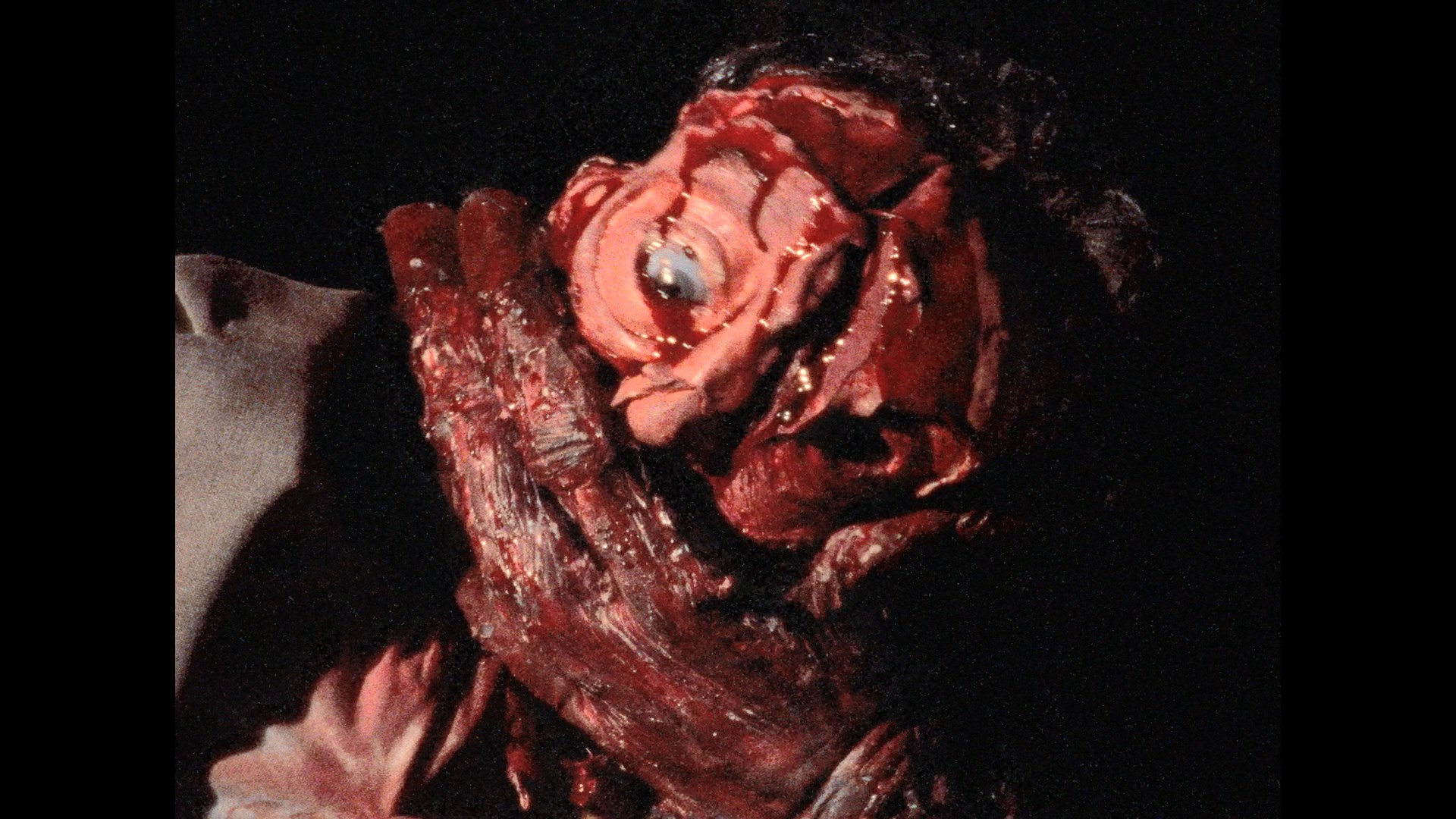 attempts to come up with scenes that went against the grain of horror conventions at the time, and the mounting of the ambitious monster effects on very limited resources, not to mention the state of the horror genre that made this tough to use as a calling card in the late '80s. The new documentary "Where Horror Lies" (41m4s) is a really solid primer on the film with Woelfel, Kesler, Baldasare, and producer Dyrk Ashton, while the archival "Behind Dream's Door" (34m21s) is a much rougher piece of work with Woelfel guiding you through the locations as a segue to additional interviews (with Spears, Baldasare, Ashton, etc.) and a generous, fun batch of camcorder-shot production footage from the original shoot. Also ported over from the DVD edition is the makeup effects featurette "Getting Monstered" (6m23s) with Kesler essentially serving as the linchpin for some archival video footage of the monster and gore effects in action. After that you get a montage of timecoded unused and alternate takes (10m57s) included a different cut of the ending, unused and alternate effects footage (5m24s), a reel of bloopers and behind-the-scenes footage (5m54s), and a sample of local news reports (4m7s) about the first Ohio State feature film production, rather misleadingly touted here as a slasher film. Two deleted scenes (1m5s and 1m8s) are included as curios since a camera light leak rendered them unusable for the finished film, followed by the original and rerelease trailers. However, there's also a whole second extras menu screen devoted to three pertinent short films: 1988's Come To Me Softly (8m10s) in its full version with credits, 1983's At the Door of Darkness (7m31s), and the original Beyond Dream's Door short (20m52s), all featuring optional Woelfel audio commentaries about his summer video production class, the group fundraising he resorted to, the equipment he used working up to 35mm, and much more. The shorts are all worth checking out as they share ideas, cast members, his method of doing the music scores for his own films, and visual touches connected to the main feature, with Softly looking nicely transferred from film and the other two pulled from SD video sources. The Beyond short also gets a raw footage reel (4m29s) and an archival making-of featurette (7m47s) with the two leads and videographer Jose Cardenas reminiscing about their first go-round with the material, while Kesler provides an archival video interview (1m34s) from 2003 about his work on Come To Me Softly.
attempts to come up with scenes that went against the grain of horror conventions at the time, and the mounting of the ambitious monster effects on very limited resources, not to mention the state of the horror genre that made this tough to use as a calling card in the late '80s. The new documentary "Where Horror Lies" (41m4s) is a really solid primer on the film with Woelfel, Kesler, Baldasare, and producer Dyrk Ashton, while the archival "Behind Dream's Door" (34m21s) is a much rougher piece of work with Woelfel guiding you through the locations as a segue to additional interviews (with Spears, Baldasare, Ashton, etc.) and a generous, fun batch of camcorder-shot production footage from the original shoot. Also ported over from the DVD edition is the makeup effects featurette "Getting Monstered" (6m23s) with Kesler essentially serving as the linchpin for some archival video footage of the monster and gore effects in action. After that you get a montage of timecoded unused and alternate takes (10m57s) included a different cut of the ending, unused and alternate effects footage (5m24s), a reel of bloopers and behind-the-scenes footage (5m54s), and a sample of local news reports (4m7s) about the first Ohio State feature film production, rather misleadingly touted here as a slasher film. Two deleted scenes (1m5s and 1m8s) are included as curios since a camera light leak rendered them unusable for the finished film, followed by the original and rerelease trailers. However, there's also a whole second extras menu screen devoted to three pertinent short films: 1988's Come To Me Softly (8m10s) in its full version with credits, 1983's At the Door of Darkness (7m31s), and the original Beyond Dream's Door short (20m52s), all featuring optional Woelfel audio commentaries about his summer video production class, the group fundraising he resorted to, the equipment he used working up to 35mm, and much more. The shorts are all worth checking out as they share ideas, cast members, his method of doing the music scores for his own films, and visual touches connected to the main feature, with Softly looking nicely transferred from film and the other two pulled from SD video sources. The Beyond short also gets a raw footage reel (4m29s) and an archival making-of featurette (7m47s) with the two leads and videographer Jose Cardenas reminiscing about their first go-round with the material, while Kesler provides an archival video interview (1m34s) from 2003 about his work on Come To Me Softly. 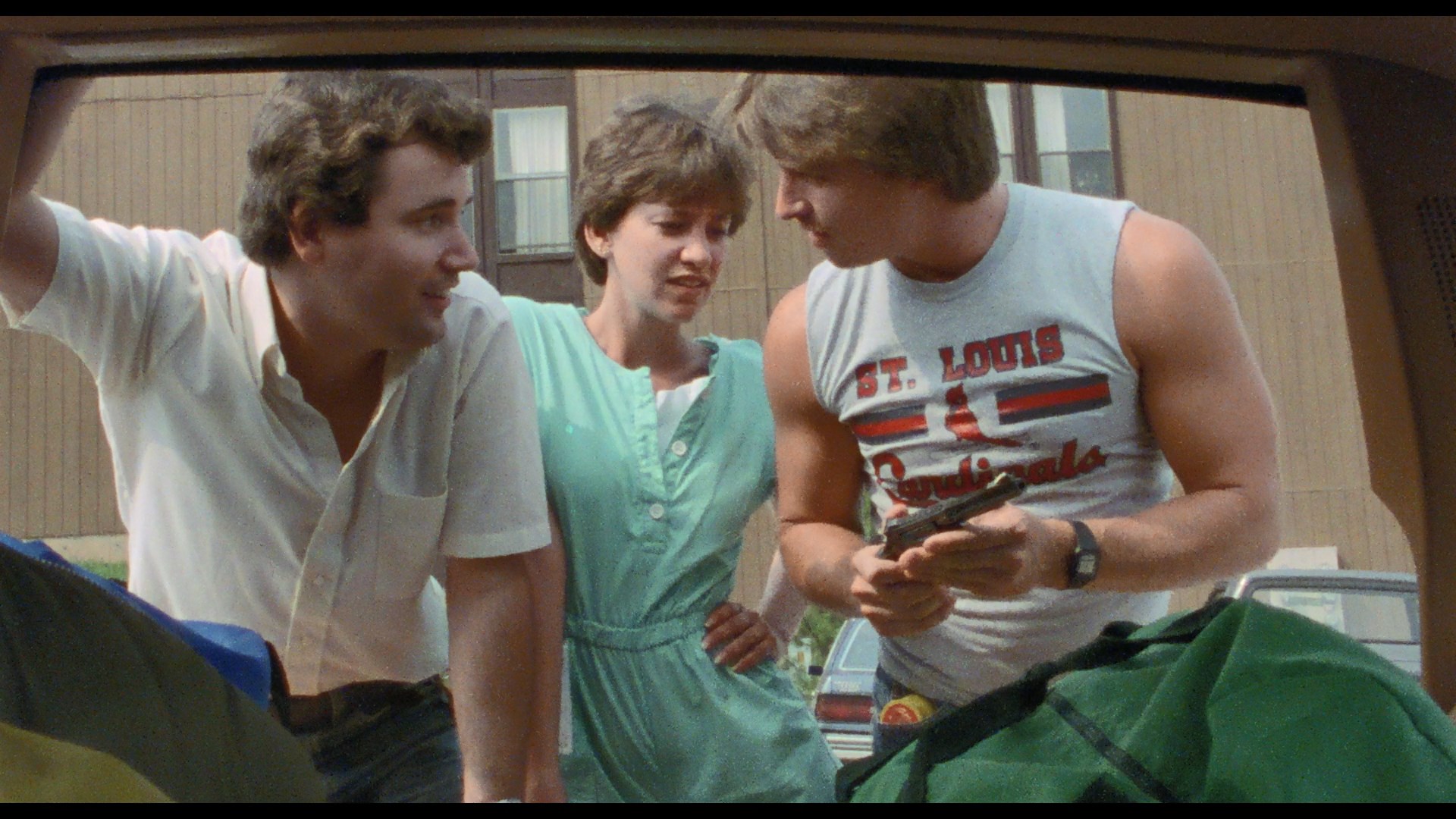 St. Louis, Missouri and once again revolving around college students. That said, if you're expecting
St. Louis, Missouri and once again revolving around college students. That said, if you're expecting  something calling back to the likes of Final Exam, well, you're in for a surprise as it takes some odd narrative swerves including a dive into the occult in the last stretch. Shot on 16mm and running an indulgent 114 minutes (if ever a movie screamed out for a fanedit, this would be it), this one is easily the most obscure entry as it was barely self-distributed and never given a bona fide general retail release.
something calling back to the likes of Final Exam, well, you're in for a surprise as it takes some odd narrative swerves including a dive into the occult in the last stretch. Shot on 16mm and running an indulgent 114 minutes (if ever a movie screamed out for a fanedit, this would be it), this one is easily the most obscure entry as it was barely self-distributed and never given a bona fide general retail release. 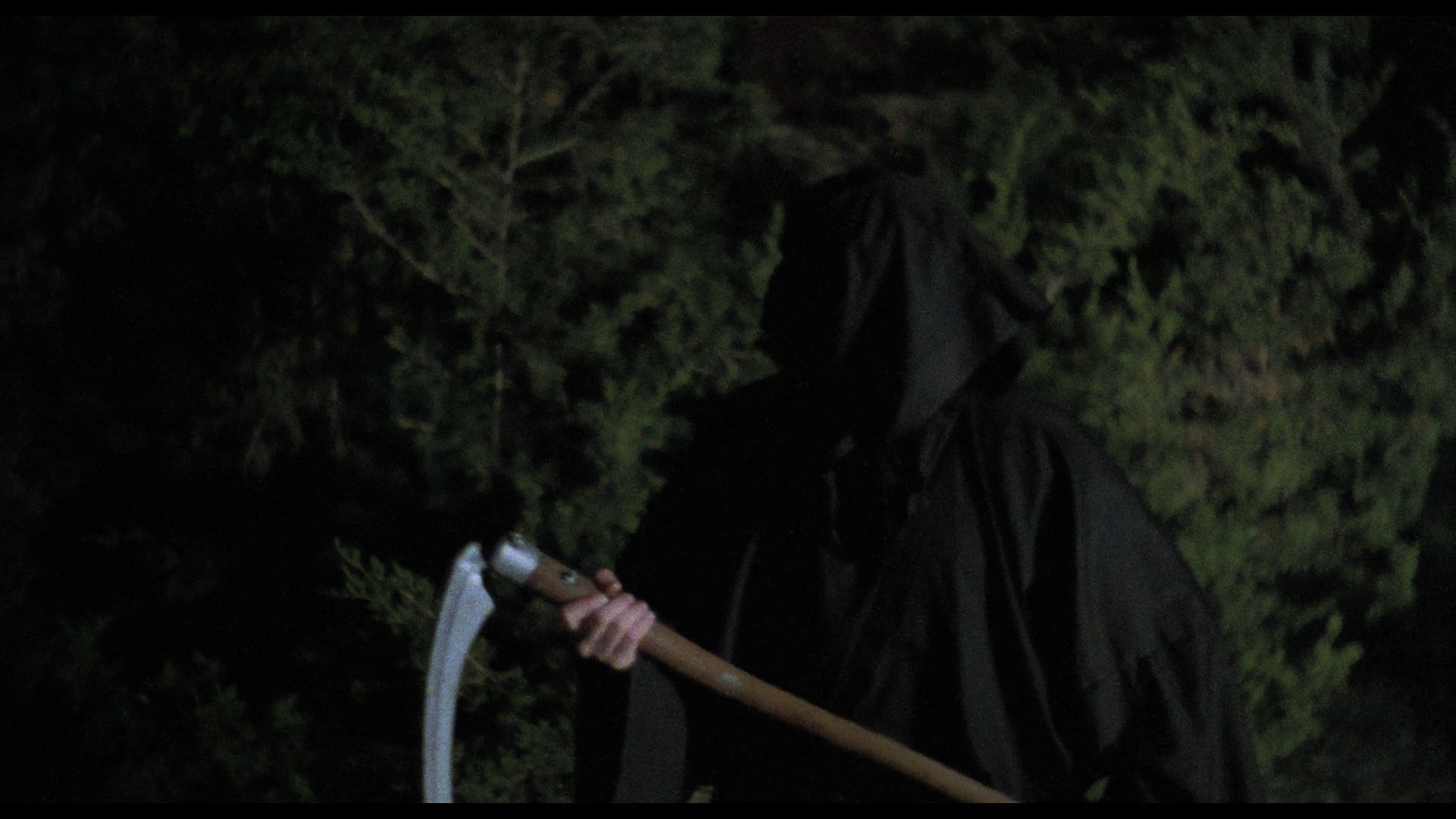 majority of the dialogue was looped in post-production adding to the awkward, disjointed feel. In particular, the pivotal early class lecture
majority of the dialogue was looped in post-production adding to the awkward, disjointed feel. In particular, the pivotal early class lecture 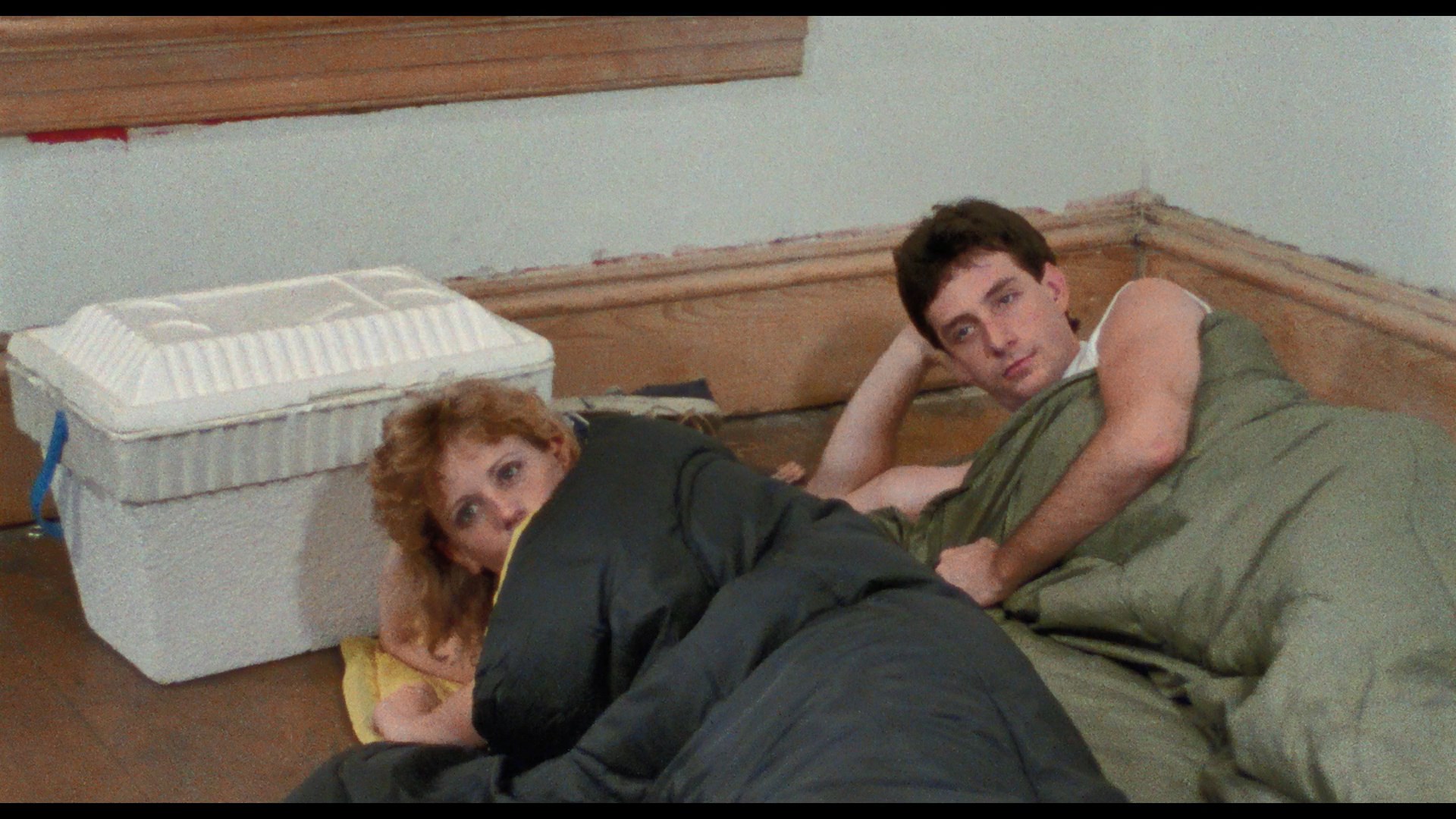 scene is the goofiest of its kind since Blood Feast, so take that as a recommendation if you're in the right spirit. In general the acting is highly variable, of course, and the strange attempts at raunchy buddy banter will often leave you scratching your head; however, a few manage to surprise you with Comer in particular having fun as a mixture of hero and comic relief. The can-do spirit here on a thrift store budget goes a long way towards earning goodwill here if you just sit back and go along with it, with the truly nutso finale paying off in its own way complete with some unexpected special effects that will bring a smile to your face. Vinegar Syndrome's disc looks excellent with a new 2K scan from the 16mm original camera negative, and the DTS-HD MA English 2.0 mono track (with optional English SDH subtitles) sounds great. A new audio commentary with director-writer-producer-editor Jack Snyder, composer Carl Leta, effects artist William Crawford, and actors Coleman, Dave Mayer, and Comer is both self-deprecating ("This movie needed to be edited a little tighter!" "With a machete!") and informative with lots of stories about how the film came together over a makeshift schedule that even had single scenes broken up over different days or even weeks. In "Fatal Examination" (47m40s), Snyder, Coleman, Comer, Mayer, Crawford, and Carlberg-Snyder chat about the various films that influenced the project (The Thing, The Texas Chain Saw Massacre, etc.), the existing friendships between them that bound them together, and the very DIY approach that often had something goofy happening just inches off camera.
scene is the goofiest of its kind since Blood Feast, so take that as a recommendation if you're in the right spirit. In general the acting is highly variable, of course, and the strange attempts at raunchy buddy banter will often leave you scratching your head; however, a few manage to surprise you with Comer in particular having fun as a mixture of hero and comic relief. The can-do spirit here on a thrift store budget goes a long way towards earning goodwill here if you just sit back and go along with it, with the truly nutso finale paying off in its own way complete with some unexpected special effects that will bring a smile to your face. Vinegar Syndrome's disc looks excellent with a new 2K scan from the 16mm original camera negative, and the DTS-HD MA English 2.0 mono track (with optional English SDH subtitles) sounds great. A new audio commentary with director-writer-producer-editor Jack Snyder, composer Carl Leta, effects artist William Crawford, and actors Coleman, Dave Mayer, and Comer is both self-deprecating ("This movie needed to be edited a little tighter!" "With a machete!") and informative with lots of stories about how the film came together over a makeshift schedule that even had single scenes broken up over different days or even weeks. In "Fatal Examination" (47m40s), Snyder, Coleman, Comer, Mayer, Crawford, and Carlberg-Snyder chat about the various films that influenced the project (The Thing, The Texas Chain Saw Massacre, etc.), the existing friendships between them that bound them together, and the very DIY approach that often had something goofy happening just inches off camera. 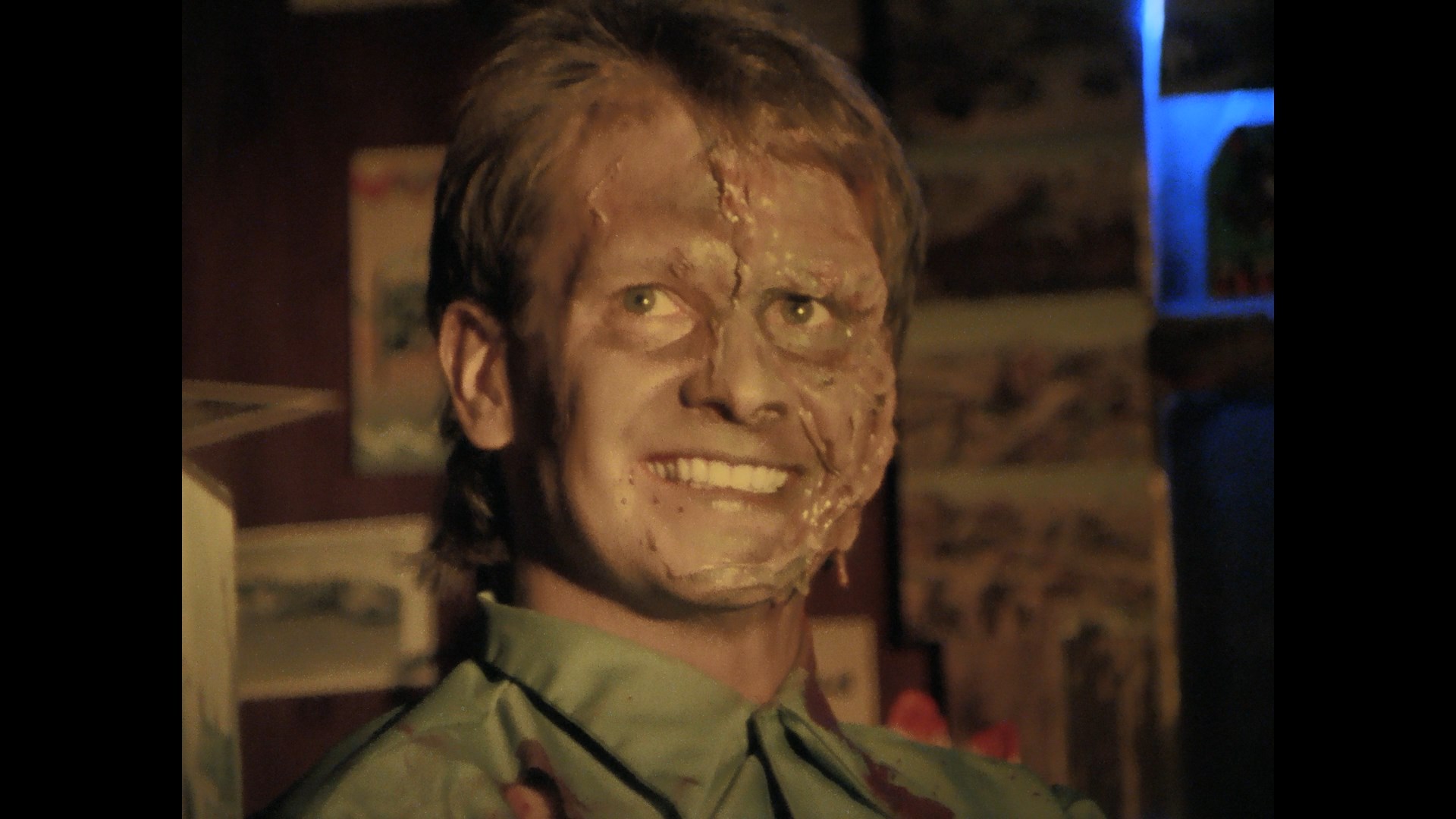 several years in Newbury,
several years in Newbury, 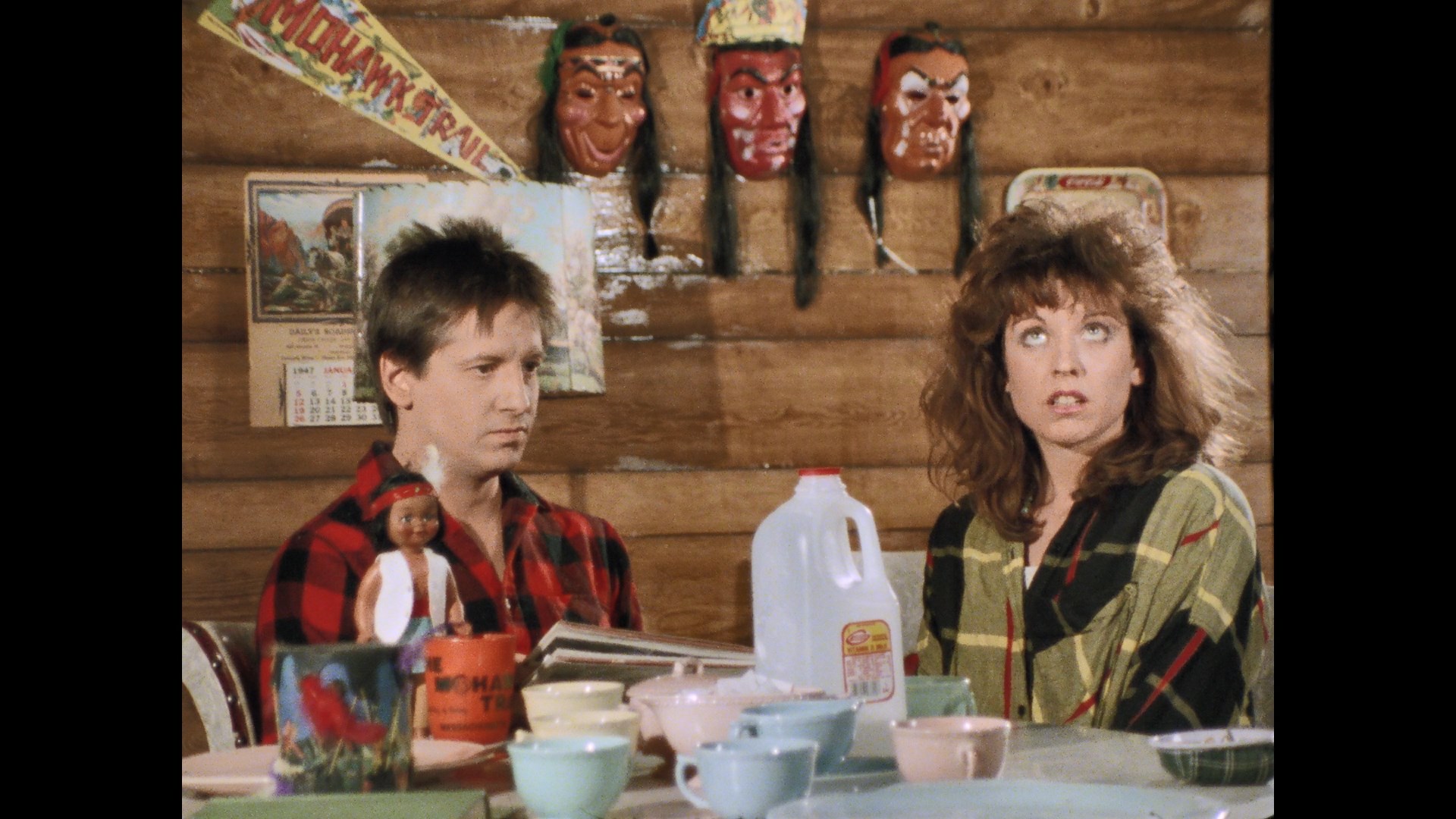 Massachusetts starting in 1986 on a mixture of 16mm and Super 8, it's a charming and frequently confounding creature feature originally given a scant VHS release from Tempe Video back in 1992 and later given a lavish self-distributed DVD edition in 2008. With a barrage of lo-fi monster effects and a complete disregard for traditional cinematic aesthetics, it's a thoroughly unique concoction that's managed to astound any viewer lucky enough to step into its path.
Massachusetts starting in 1986 on a mixture of 16mm and Super 8, it's a charming and frequently confounding creature feature originally given a scant VHS release from Tempe Video back in 1992 and later given a lavish self-distributed DVD edition in 2008. With a barrage of lo-fi monster effects and a complete disregard for traditional cinematic aesthetics, it's a thoroughly unique concoction that's managed to astound any viewer lucky enough to step into its path. 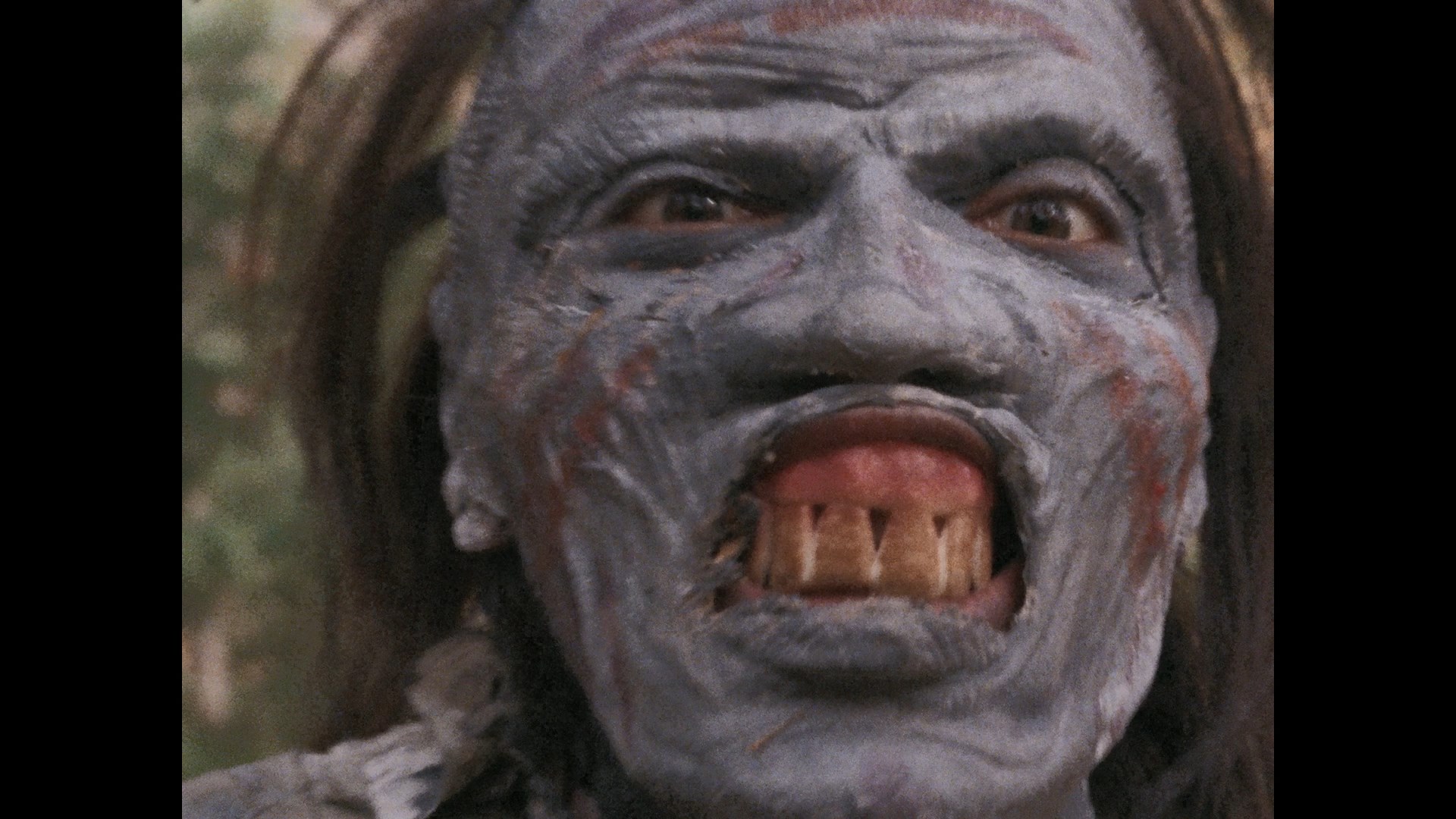 adorably scrappy efforts
adorably scrappy efforts 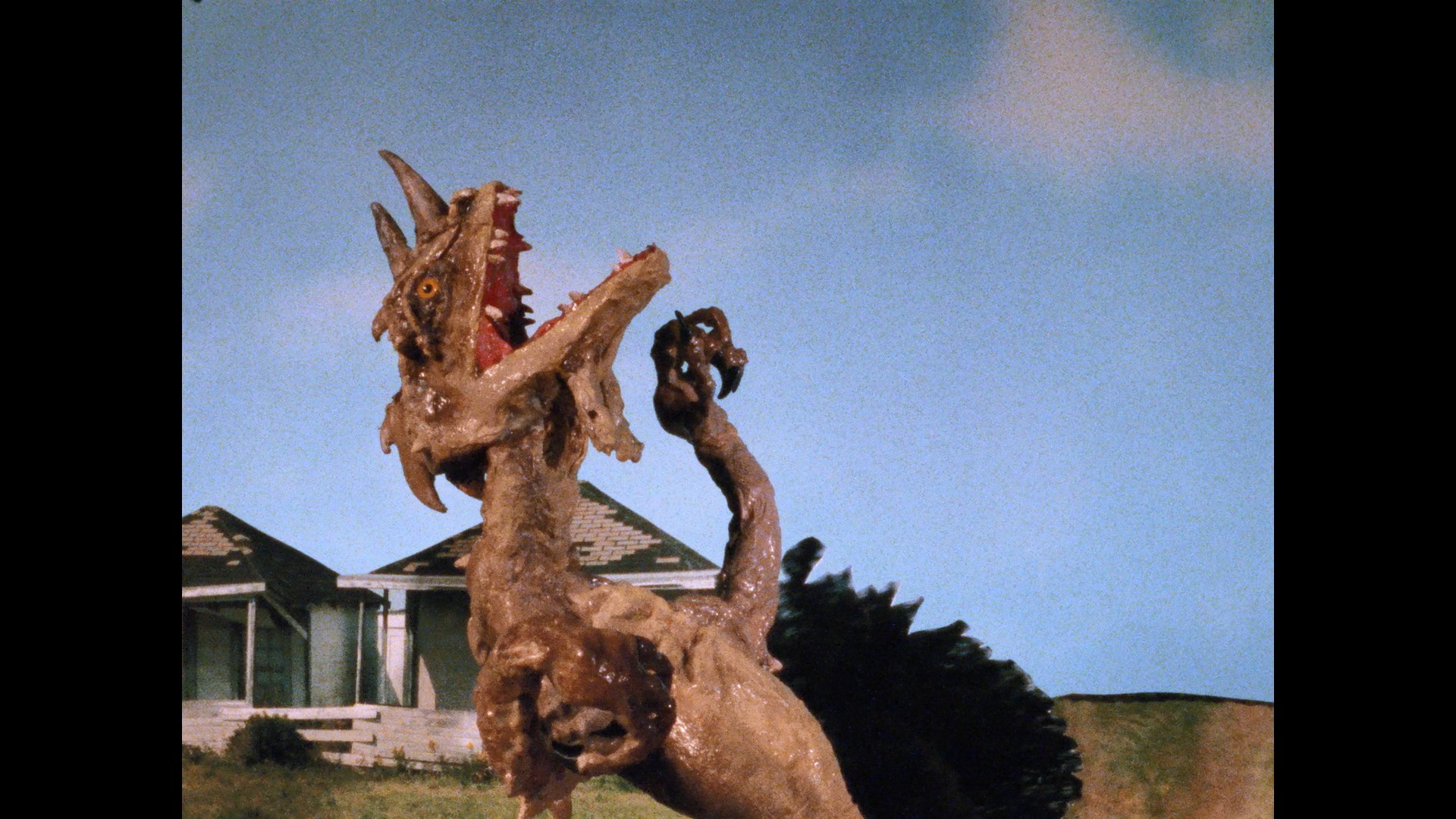 like Flesh Gordon and The Crater Lake Monster. For many fans the inclusion of this film alone will be reason enough to snap up this set, and the new scan is a real treat for the eyes as it wrings as much detail and color as possible out of the patchwork mixture of formats and shooting periods. The film opens with a disclaimer about the technical limitations including "rudimentary" nature of the original sound recording, so it's just fair to say that the DTS-HD MA English 2.0 mono track (which, as with most other VS titles including the ones in this set, sports a second lossy Dolby Digital track for some reason) is as good as this could possibly sound. Again, optional English SDH subtitles are provided.
like Flesh Gordon and The Crater Lake Monster. For many fans the inclusion of this film alone will be reason enough to snap up this set, and the new scan is a real treat for the eyes as it wrings as much detail and color as possible out of the patchwork mixture of formats and shooting periods. The film opens with a disclaimer about the technical limitations including "rudimentary" nature of the original sound recording, so it's just fair to say that the DTS-HD MA English 2.0 mono track (which, as with most other VS titles including the ones in this set, sports a second lossy Dolby Digital track for some reason) is as good as this could possibly sound. Again, optional English SDH subtitles are provided.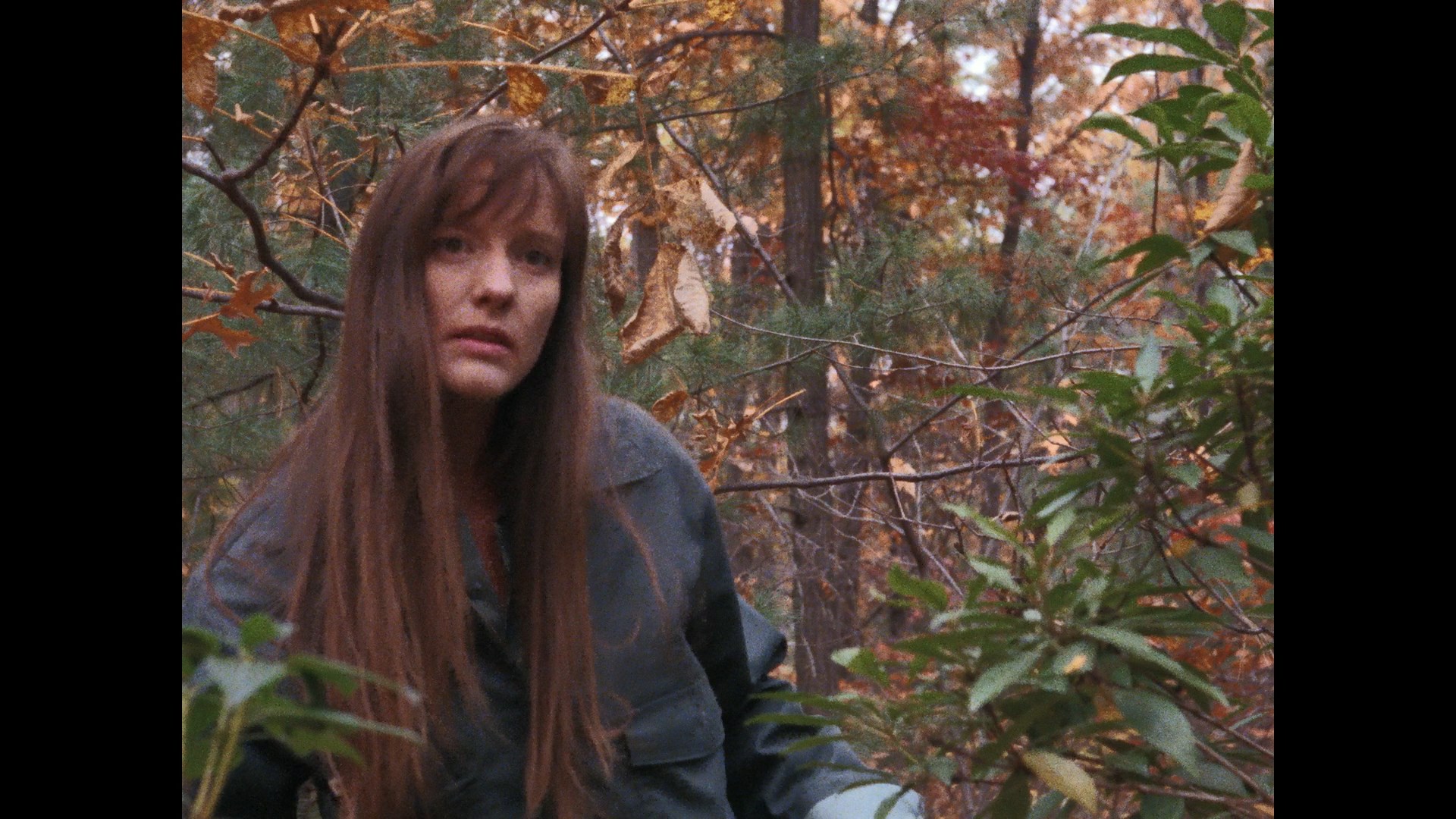 process, the regular day jobs that got in everyone's way, and much more. Then actor Charles Majka appears via Zoom in "I Saw It in a Dream" (10m35s) to explain how he first got involved through an encounter with Frizzell, the gradual cult following the film amassed, and the camaraderie on the shoot that allowed him to take advantage of some of his
process, the regular day jobs that got in everyone's way, and much more. Then actor Charles Majka appears via Zoom in "I Saw It in a Dream" (10m35s) to explain how he first got involved through an encounter with Frizzell, the gradual cult following the film amassed, and the camaraderie on the shoot that allowed him to take advantage of some of his 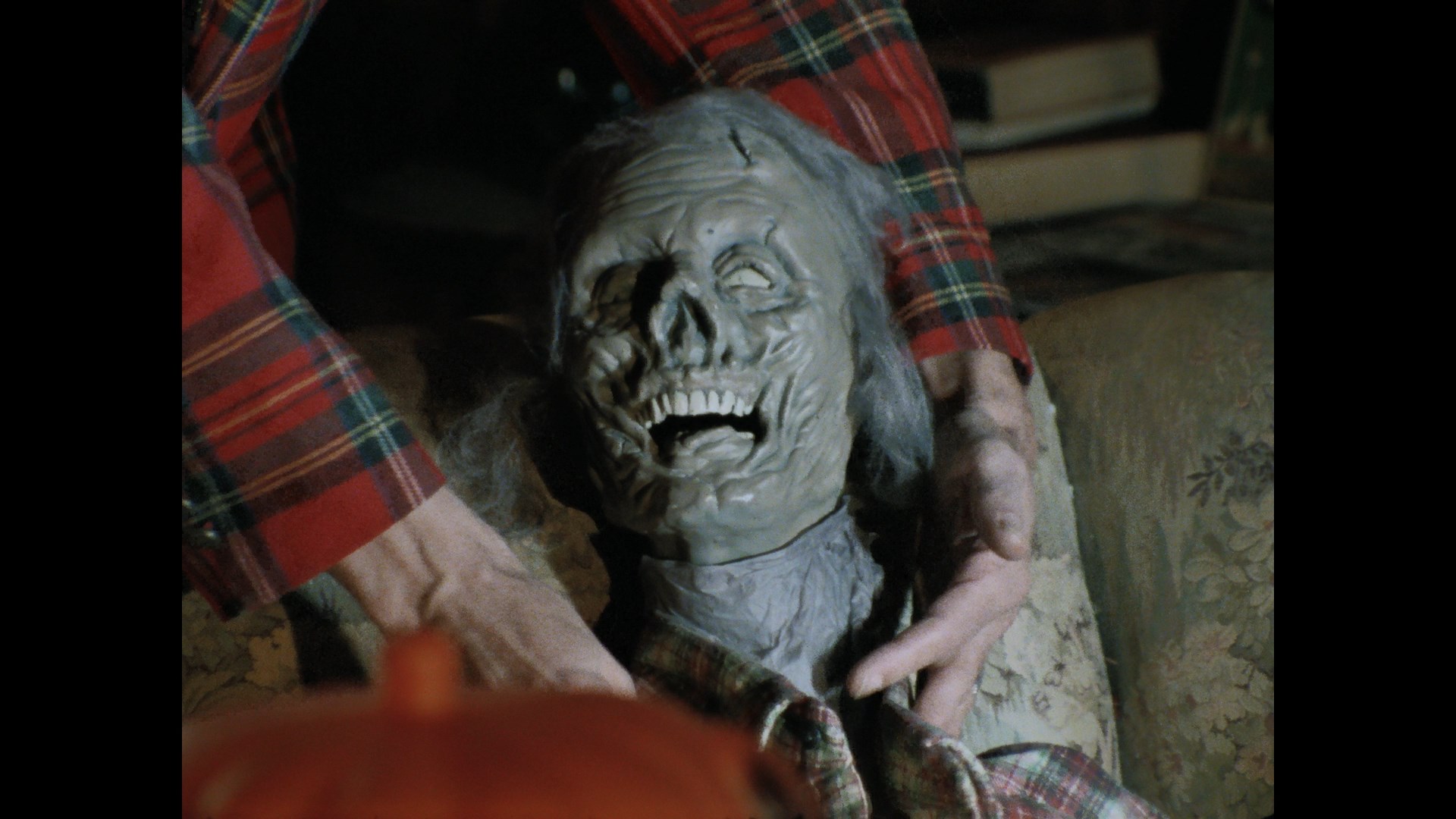 other creative skills. After that actor David Majka gets his turn in "My First Career" (13m36s) to recall working opposite "the Claymation stuff," the other projects he did with his colleagues here, and the joys of doing a DIY monster movie. (Apparently there's also another unreleased movie out there from this gang, so someone needs to get on that stat.) Actress Dori May Kelly appears in "So Bad, It's Good" (10m19s), also via Zoom, noting how this came very early in her career as she was just starting out and sharing memories of the cast members she worked with, as well as her surprise when she started hearing from friends after the film hit home video. Magri gets his spotlight in "He Wears Sunglasses at Night" (14m15s) remembering his juggling of acting jobs on screen and stage during his heyday primarily in the Boston area, as well as his "go with the flow" approach that helped him navigate this unorthodox experience. Finally in "A Movie for Filmmakers" (18m4ss), Simon Barrett (director of Seance and writer of You're Next and The Guest) goes into his own first encounter with Winterbeast, a "time capsule" type of film that threw him for a loop at first but became a fond favorite with its cheerful, goofy appeal involving irrational plotting and a childlike enthusiasm for its monster concoctions. Ported over from the DVD is the archival featurette "Oh, Dear, What Can the Matter Be?" (19m36s) with an avalanche of great behind-the-scenes footage and photos augmented with interview footage with the producer and director, followed by a batch of mostly superfluous archival deleted scenes (13m) with a cool bit of extra monster insanity at the end (set to a screwy music selection), a quick archival audio chat with composer Michael Perilstein (3m44s), and a reel of footage initially shot on video (11m49s) that was discarded for its "soap opera" look.
other creative skills. After that actor David Majka gets his turn in "My First Career" (13m36s) to recall working opposite "the Claymation stuff," the other projects he did with his colleagues here, and the joys of doing a DIY monster movie. (Apparently there's also another unreleased movie out there from this gang, so someone needs to get on that stat.) Actress Dori May Kelly appears in "So Bad, It's Good" (10m19s), also via Zoom, noting how this came very early in her career as she was just starting out and sharing memories of the cast members she worked with, as well as her surprise when she started hearing from friends after the film hit home video. Magri gets his spotlight in "He Wears Sunglasses at Night" (14m15s) remembering his juggling of acting jobs on screen and stage during his heyday primarily in the Boston area, as well as his "go with the flow" approach that helped him navigate this unorthodox experience. Finally in "A Movie for Filmmakers" (18m4ss), Simon Barrett (director of Seance and writer of You're Next and The Guest) goes into his own first encounter with Winterbeast, a "time capsule" type of film that threw him for a loop at first but became a fond favorite with its cheerful, goofy appeal involving irrational plotting and a childlike enthusiasm for its monster concoctions. Ported over from the DVD is the archival featurette "Oh, Dear, What Can the Matter Be?" (19m36s) with an avalanche of great behind-the-scenes footage and photos augmented with interview footage with the producer and director, followed by a batch of mostly superfluous archival deleted scenes (13m) with a cool bit of extra monster insanity at the end (set to a screwy music selection), a quick archival audio chat with composer Michael Perilstein (3m44s), and a reel of footage initially shot on video (11m49s) that was discarded for its "soap opera" look.